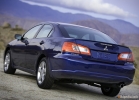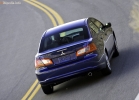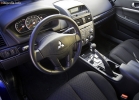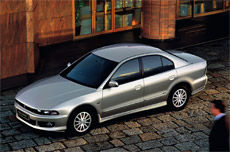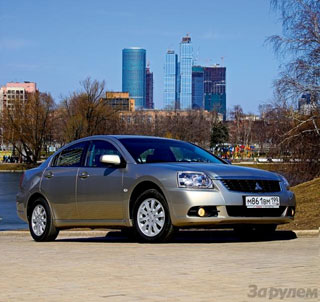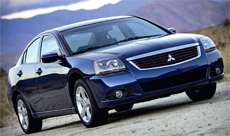Mitsubishi Galant test drive since 2008 sedan
Hello active youth!
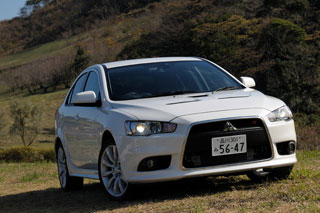 The Mitsubishi Galant Fortis series has developed in the Sportback version (hatchback body). What changes do this modification bear in itself?
The Mitsubishi Galant Fortis series has developed in the Sportback version (hatchback body). What changes do this modification bear in itself? Top class
The new Sportback model is outwardly very similar to the sedan: they cannot be distinguished in front, and the side doors have the same outlines. The whole difference in the design of the back of the body. When looking at the updated body, an association arises: a kind of composite sedan, in the spirit of current trends. This car is not at all a simplified version of the sedan (or notchback), the model itself is worthy of the highest rating.
Hatchbacks are generally characterized by relatively small dimensions, however, for example, in Europe, hatchbacks of enlarged sizes are quite popular. The main consumer of such cars is active youth.
Weight increase so what?
With the transition to the hatchback version, the car solidly gained in weight plus 60 kilograms. Basically, these kilograms are necessary to strengthen the supporting structures enlarged in the size of the body, and the trunk door itself weighs decently. However, this is compensated by the practicality and ease of use of additional space in the car: the floor in the trunk is two -level, and with folded rear seats, a flat platform is 1,570 by 1,395 mm in size. One of the pleasant surprises: the backs of the seats are automatically folded in one movement of the lever. The weight of the rear of the car has a positive effect on the driving quality: the behavior of the rear wheels becomes more confident, and the car as a whole is more controlled and quiet.
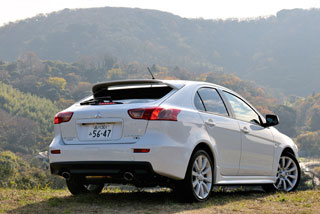 After the announcement of the start of Galant Fortis sales, quite a lot of time has passed, and during this time the developers managed to make some changes, in particular, the suspension was finalized.
After the announcement of the start of Galant Fortis sales, quite a lot of time has passed, and during this time the developers managed to make some changes, in particular, the suspension was finalized. The Sportback model is presented in three modifications: Ralliar, Sport and Touring. My report will affect the first two. In the standard version of the Touring and Sport version, the front wheels have a drive, although an all -wheel drive option is also available.
In the Ralliart configuration, the car is equipped with a 240-horsepower engine (versus 154 hp in standard configuration), a constant all-wheel drive with an intended differential, an automated 6-speed gearbox with two clutch Sport SHIFT TransMission, SST (an analogue of Volkswagen or PDK from Porsche).
Rationality in everything
The test drive took place in the residential area on the sea coast, so the conditions did not allow cars to reveal all their capabilities, but from the point of view of everyday driving they showed themselves perfectly. Good driving qualities, quiet movement, the car is calmly touching and calmly stops, it is a pleasure to park.
There are no complaints about the motor. As already mentioned, the power of the engines on Ralliart and Sport varies, but in both cases I noted a good torque, and the general behavior is modern and highly effective.
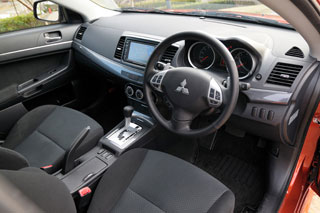 As for the SST transmission, the programs switch very gently, no slipping, the engine responds to my actions quickly and adequately. There were no difficulties in choosing the desired transmission, and the delay in switching to the rear gear was shorter than I expected. If you accidentally press the gas with your right foot, and the left on the brake, then the engine will not stall.
As for the SST transmission, the programs switch very gently, no slipping, the engine responds to my actions quickly and adequately. There were no difficulties in choosing the desired transmission, and the delay in switching to the rear gear was shorter than I expected. If you accidentally press the gas with your right foot, and the left on the brake, then the engine will not stall. In a car with a drive on the front wheels there is a slight slippage of the transmission belt, while the rate of speed on the number of revolutions is very good, the motor behaves conscientiously. As in the case of SST, the selection of gears (out of six) is carried out using a lever, but in this case the lever is located on the steering column, which facilitates the manipulation.
Turning into a hatchback, the car loses somewhat in the hardness of the body, but this does not create a problem: the running qualities of the car did not disappear, as well as a characteristic posture. The suspension very skillfully absorbs road irregularities. Although I was unpleasantly surprised at how she resonates on small irregularities, such as zebra (there is a bad feeling of petty vibration).
My personal recommendation is a front -wheel drive option in the Touring configuration. And if you need an all -wheel drive machine, then, perhaps, that the Ralliart equipment will be a good choice.
Technical characteristics of Mitsubishi Galant Fortis Sportback Ralliart
Full length: 4 585 mm.
Full width: 1 760 mm.
Full height: 1 515 mm
Wheel base: 2 635 mm.
Weight: 1 590 kg.
Drive: complete
Engine: 2.0-liter 4-cylinder DOHC with 16 valves, turbocharged, maximum power of 240 hp. at 6,000 rpm, maximum torque 35 kg-M at 3,000 rpm.
Price: 3 013 500 yen ($ 33,440).
The price of a test copy: 3 509 100 yen ($ 38 940).
Options: Winter equipment (12,600 yen), roof spoiler (42,000 yen), navigation system with a hard drive and a 7-inch monitor + rear view camera + Acoustics Rockford Fosgate (325 500 yen), side airbags and safety cores (safety cores (safety cores (safety cores 84,000 yen), the color of the body of White Pearl (31 500 yen).
Technical characteristics of Mitsubishi Galant Fortis Sportback Sport
Full length: 4 585 mm.
Full width: 1 760 mm.
Full height: 1 515 mm
Wheel base: 2 635 mm.
Weight: 1,420 kg.
Engine: 2.0-liter 4-cylinder DOHC with 16 valves, maximum power 154 hp. at 6,000 rpm, maximum torque 20.2 kg-M at 4,250 rpm).
Price: 2 163 000 yen ($ 24,000).
The price of a test copy: 2 558 850 yen ($ 28 400).
Options: Winter equipment (12,600 yen), roof spoiler (42,000 yen), navigation system with a hard drive and a 7-inch monitor + rear view camera (225 750 yen), side airbags and safety curtains (84,000 yen) , the color of the Passion Orange Pearl (31 500 yen).
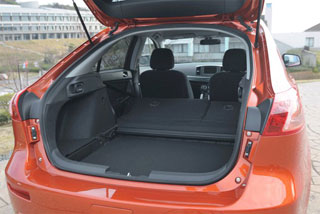
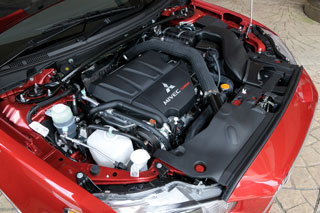
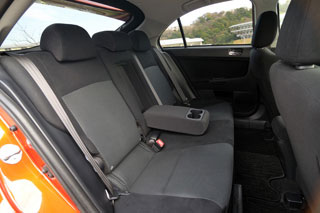
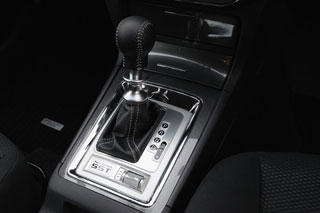
Source: webcg.net

